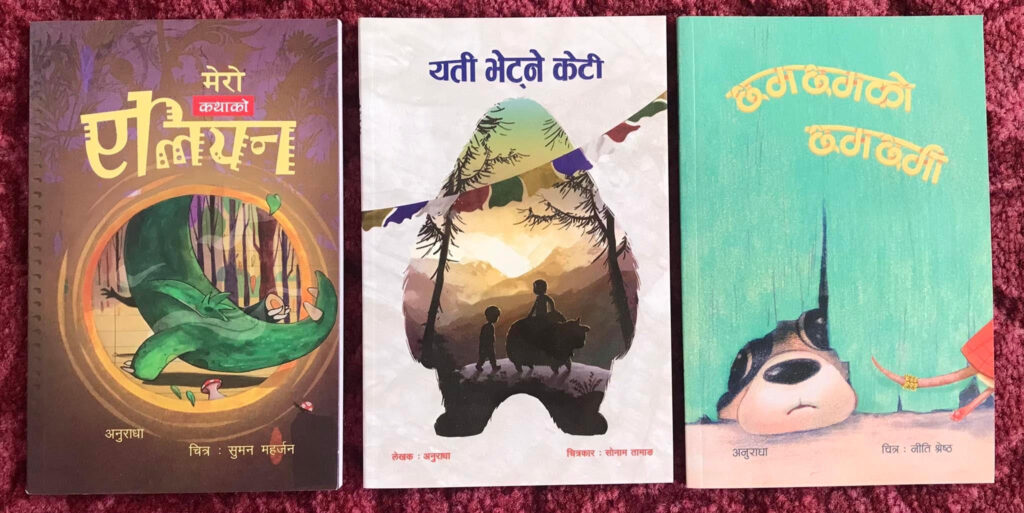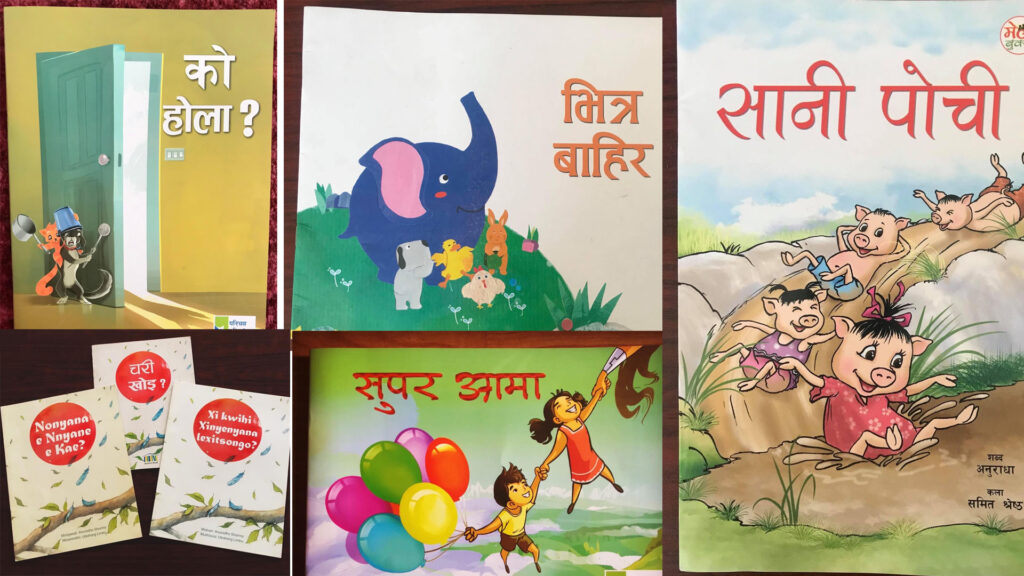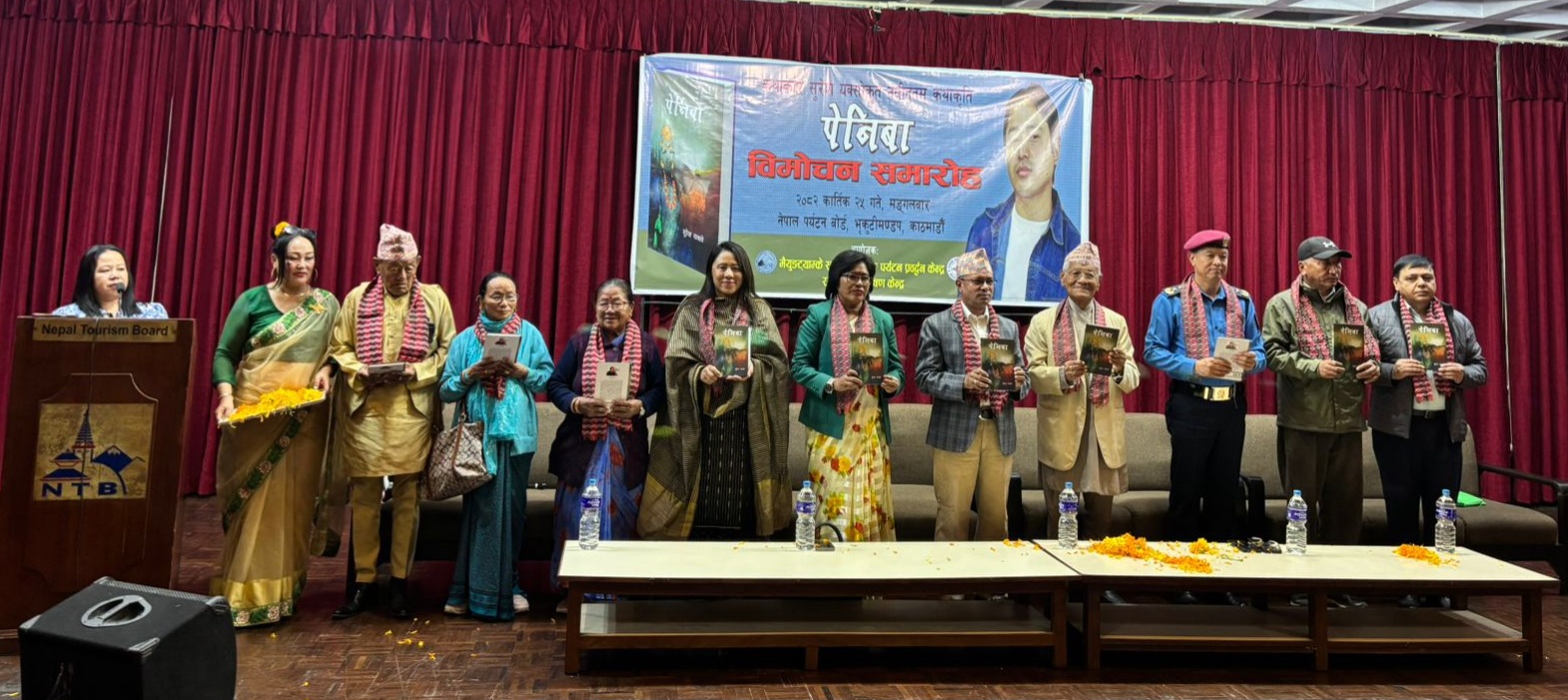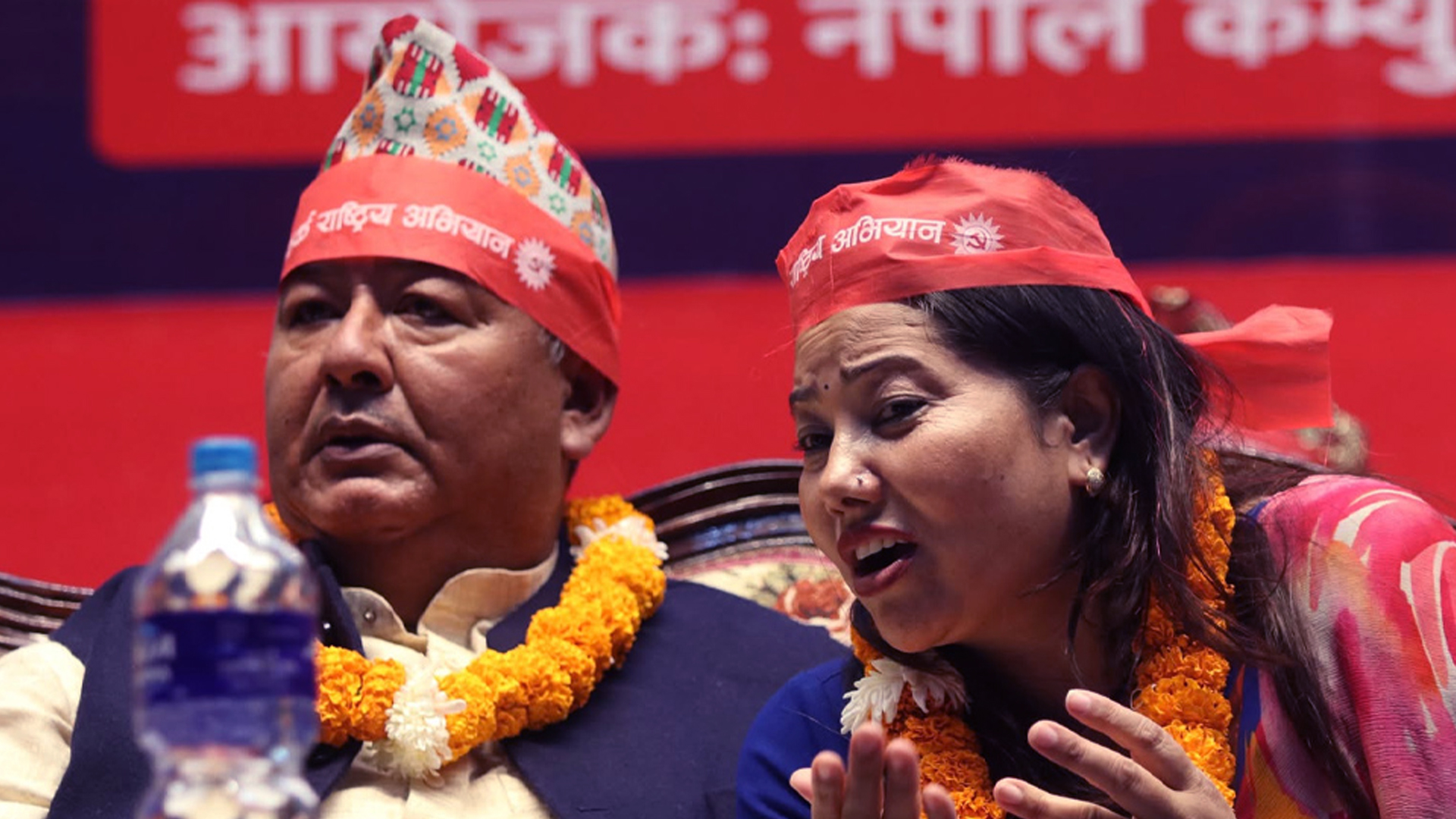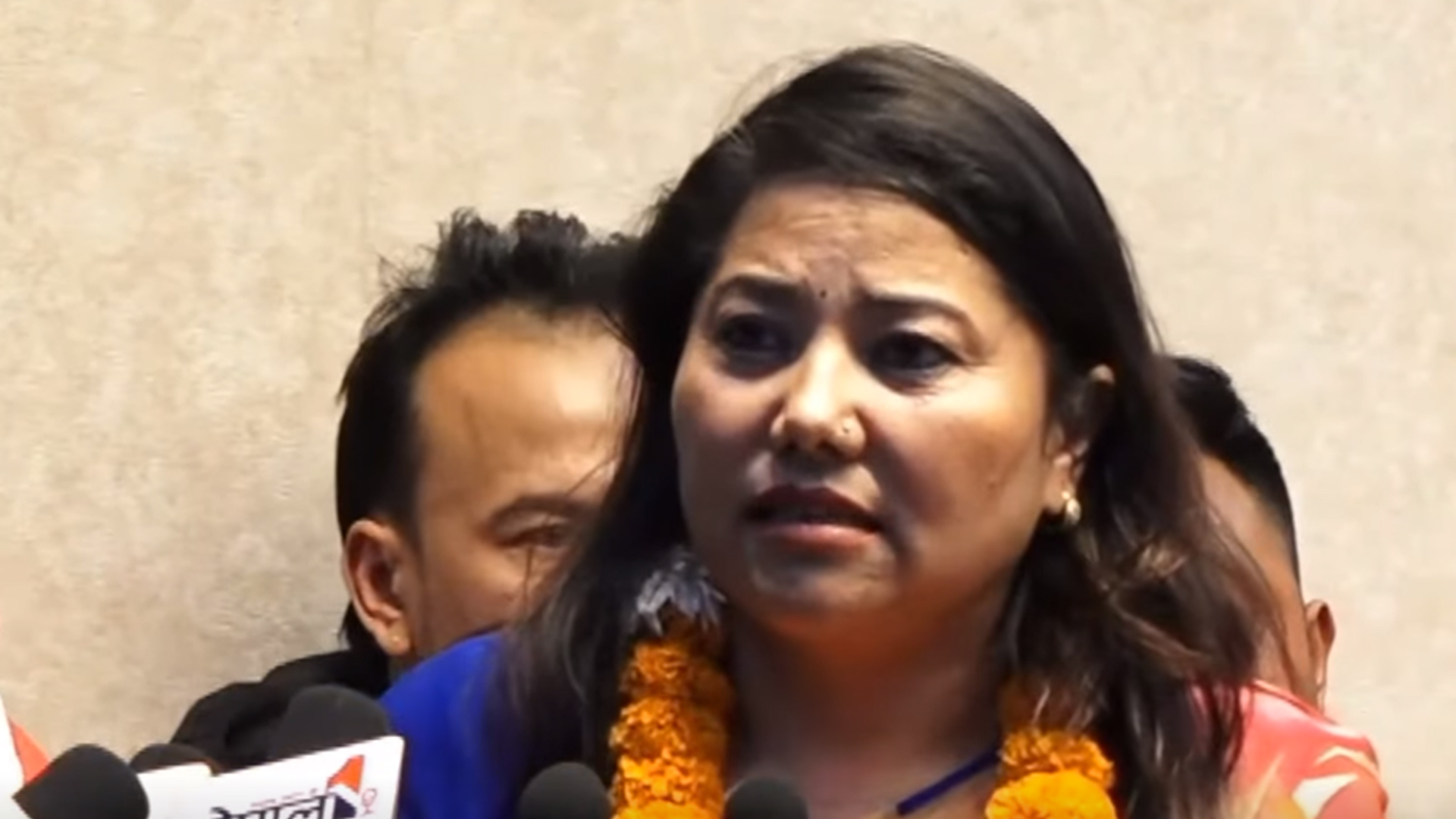 २०८० भाद्र ९
२०८० भाद्र ९
Anuradha is a children’s author who has been writing, editing and translating children’s books for over a decade. Her books are a part of reading projects in over 300 schools in Kathmandu and her remarkable contributions have garnered numerous accolades, including the esteemed ‘ParijaatBisheshPuraskar’ award.
Anuradha’s books have been translated into various languages in and outside of Nepal. Notably, her latest publication, ‘The Story of Babur: Prince, Emperor, Sage’ has earned a spot on ‘The Guardian’s’ esteemed list of outstanding new picture books and novels and has also made it to the long list in the ‘Best Historical Fiction for Young People 2023’ category. Alongside her literary pursuits, Anuradha’s extensive professional background includes working with organizations such as Radio Nepal, Nepalese Society for Children’s Literature,Read Nepal, Room to Read,and others.
Currently serving as the president of Sarathi Nepal and as an ambassador for Thang Foundation, a Netherlands-based organization, Anuradha is simultaneously pursuing her PhD in children’s literature. Anuradha strongly believes that reading is the key to unlocking a child’s potential and that every child should have access to engaging, thought-provoking literature.
Here Sita Tumkhewa’s interview with children’s author Anuradha, for Nepal Mamila:
Amidst a context where Nepali literature appears constrained by the notion of “what sells should be provided,” your consistent dedication to children’s literature carries considerable weight. Could you elaborate on the reasons behind this choice? Why is that?
– Though market trends play a significant role in shaping publishing decisions, my focus on writing children’s literature stems from a deeper motivation. I write because I am genuinely passionate about creating meaningful and engaging stories that resonate with young readers.
Children are at a crucial stage of development, and the stories they encounter during this time can leave a lasting impact. My dedication to children’s literature comes from a desire to contribute positively to this developmental journey. It’s a commitment to providing young readers with tales that entertain, educate, and inspire, regardless of immediate commercial gains.
Moreover, the appreciation for literature goes beyond just commercial success. As readers, we value stories that touch our hearts, challenge our perspectives, and offer us a sense of connection to the world. Therefore, while commercial considerations are valid, my true motivation lies in the belief that children’s literature has a unique and lasting impact that goes beyond immediate market trends. It’s about fostering a love for reading, nurturing imagination, and contributing positively to the growth of future generations.
How is the current state of children’s literature?
– In the broader context of the world, children’s literature is experiencing a positive shift. In recent years, there has been a growing recognition of the significance of children’s books in fostering literacy, imagination, and empathy among young readers.
In the context of Nepal, the situation of children’s literature is also evolving in a promising direction. With the passage of time, there is a noticeable increase in the interest and awareness surrounding children’s books. Not only are parents and educators emphasizing the importance of exposing children to literature early in their lives, but there’s also a rising desire among individuals to become children’s authors themselves.
One encouraging aspect is the integration of children’s literature into educational curricula. Educators are recognizing that well-crafted stories can serve as powerful tools for teaching various subjects and life lessons. This integration highlights the evolving role of children’s literature beyond entertainment, extending its influence into formal education.
Furthermore, the improvement isn’t just in terms of quantity but also quality. The themes, subjects, and narratives within children’s literature are becoming more diverse and reflective of the multifaceted world children inhabit. This inclusivity allows young readers to connect with characters and situations that resonate with their own experiences.
Another noteworthy trend in the current state of children’s literature is the increasing emphasis on translation. Many stories, originating in various languages and cultures, are being translated to make them accessible to a wider audience. This practice not only enriches the diversity of children’s literature available but also fosters cross-cultural understanding among young readers.
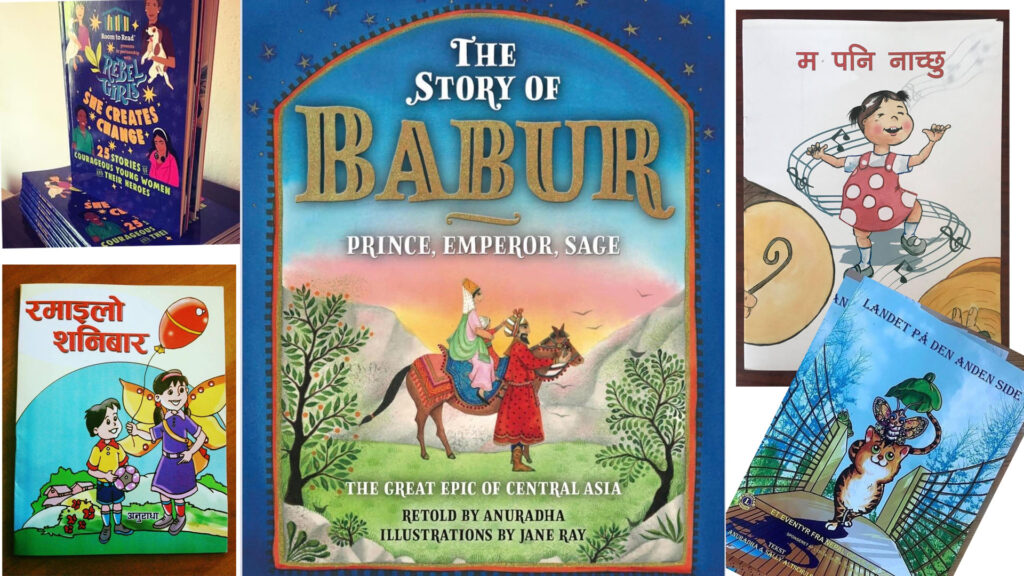

In light of your current efforts in publishing children’s literately materials, how crucial is it to develop content aligned with the psychology of children, tailored to their societal and environmental context? Drawing from my own experiences, I’ve come to realize that our generation was not fortunate enough to access such exquisitely composed and scientifically designed literary works. Is a generation that had access to good children’s literature different from that who did not?
– Indeed, the role of well-crafted children’s literature goes beyond entertainment; it actively contributes to a child’s cognitive, emotional, and ethical development. It’s encouraging to hear that you recognize the value of such literature and the impact it can have on young minds.
The generation that is fortunate enough to have access to good children’s literature does indeed experience some significant differences compared to those who didn’t. For example, exposure to quality literature enhances language skills and vocabulary, stimulates imagination and creativity, promotes empathy and a broader understanding of the world around them and challenges cognitive abilities and can influence own moral development and decision-making. Similarly, children’s literature introduces a global perspective, fostering cultural awareness and reducing stereotypes or biases. The generation that has had an exposure to enjoyable and engaging literature at a young age often leads to a society of adults with a lifelong love for reading.
As a children’s author, I find immense joy in contributing to these positive impacts and shaping the experiences of young readers in meaningful ways.
Writing children’s stories means understanding child psychology and writing accordingly. How do you write the plot of the story?
– Writing for children requires a deep understanding of their psychology. Therefore, it is also necessary to carefully consider their emotions, interests and cognitive abilities in order to create the plot of the story to be written for them.
At the very beginning, I determine the target age group for my story and then select a theme and vocabulary that is relatable and engaging for the chosen age group. I often use a simple and straightforward structure that helps children understand the story easily. That structure usually includes a clear beginning, middle, and end. First, I introduce the characters and their world. As the story progresses, I include age-appropriate conflicts and obstacles that the characters face. It helps the readers to connect with the feelings of the characters and move forward with them in the story. To keep their minds occupied, I introduce a sense of wonder and imagination into the plot. I also consider how illustrations can complement the story.
The key is to connect with the emotional and cognitive world of children. By understanding their developmental stages, interests, and emotions, we can create a compelling and resonant plot that captivates young readers and leaves a positive impact.
How many languages do you write in? Are your books limited to Nepal, or do they also reach other countries?
– I write all my stories in English and subsequently translate them into Nepali before sending it to a publisher for print. All my books that have been printed within Nepal are in the Nepali language. Yet, a recent development involves the creation of two works in English that have found publication in their original form. The first one, titled ‘The Story of Babur: Prince, Emperor, Sage,’ has been published in the United Kingdom. Similarly, the second book, ‘The Rebel Girls,’ a collection of twenty five stories, includes five stories written by me and has been published in the United States.
Moreover, some of my books have been translated into various languages and have transcended geographical boundaries. For example, translations of my works exist in over five languages within India, two languages on the African continent, and three languages in Pakistan. Furthermore, my books have also been translated into Danish, French, Russian, and Uzbek languages.
Are your works also included in the curriculum?
– Yes, some of my works have been included in the curriculum and I am aware of it. However, most of the time I become aware through external sources when someone informs me, “Your story is included in the syllabus” or “Your story/book has been translated into a particular language.” Typically, there is little inquiry into my preferences, nor do I receive notifications about the printing or translation process. Presently, my sentiments revolve around a sense of contentment knowing that my story has made its way into the syllabus or has been translated into other languages of Nepal.
Is the diversity of language, culture, and geography causing challenges in writing children’s literature?
– Writing children’s literature in diverse linguistic, cultural, and geographical contexts can have both challenges and opportunities.
On the brighter side, it brings about a wealth of positive outcomes. In a rapidly changing world where global awareness and cultural sensitivity are becoming increasingly vital, diverse linguistic, cultural, and geographical contexts in children’s literature is indeed the need of the hour. It reflects the reality of our interconnected world and introduces young readers to a wide array of experiences, values, and viewpoints. By navigating the complexities of these differences, children’s literature encourages cultural appreciation, empathy, and global understanding from a young age.
It prepares young minds to navigate an interconnected society with respect and open-mindedness.
On the other hand, creating stories that resonate across these diverse contexts requires careful consideration and a nuanced approach. It involves striking a balance between cultural authenticity and universal themes that young readers from various backgrounds can relate to. Adapting language, characters, and settings to cater to different cultural perspectives while maintaining a coherent narrative can be both intricate and rewarding. To address these challenges, thorough research, cultural sensitivity, consultation with experts, and collaboration with individuals from the target culture are essential.
It’s also important to remember that while challenges exist, they can lead to richer, more diverse, and culturally enriching children’s literature that resonates with young readers around the world. While these challenges may seem complex, they pave the way for stories that resonate universally while celebrating the uniqueness of each culture. Ultimately, the positive impact on young readers’ perspectives and the broader society makes the effort to address these challenges exceptionally rewarding.
Aapart from a few instances, have you noticed children’s literature receiving adequate recognition? It seems that it’s not given enough priority and is somewhat neglected. How do you perceive this based on your experience?
– This is a frequently asked question. It seems that there might be a perception that children’s literature is not given as much importance or recognition as it deserves. However, from my experience, I see a growing awareness and appreciation for children’s literature among parents, educators, and even society at large. I’ve also noticed that more individuals are expressing interest and enthusiasm in the field of children’s literature.
While it’s true that awards and recognition might not be as frequent in the field of children’s literature compared to other genres, I believe that the impact of quality storytelling goes beyond awards. The joy of seeing children engrossed in a story, the connections made with readers, and the positive influence on young minds are deeply rewarding in themselves.
How many of your works have been published so far? Who do you mostly collaborate with?
– I am not really sure of the exact number of books that I have written but I assume there are about twenty.
For the development of a book, I collaborate with illustrators, editors, designers and publishers. Apart from that, I also collaborate withother writers, schools and many organizations like UNICEF, British Council and Asia Foundation. The collaborations are not just for the purpose of publishing my books but also to conduct writing workshops, holding conferences and organizing events related to children’s literature. Apart from that, I am involved with some of them, as a consultant as well.
Have you received any support or recognition from the government? Has it motivated you to continue your work?
– While I haven’t received any awards or recognition from the government for my work in the field of children’s literature, I’m encouraged by the fact that the government has started incorporating children’s books and stories into its curriculum. This recognition reflects a growing understanding of the importance of storybooks in the early stages of a child’s development.
It’s a step in the right direction and reinforces the importance of nurturing a love for reading and learning from an early age.
Having my stories included in the government curriculum is a form of recognition that I deeply appreciate.
However, regardless of external recognition, I’m committed to continuing my work in this field, driven by the joy of creating stories that inspire, educate, and entertain children.
In your perspective, what aspects of children’s literature are yet to be explored?
– In the realm of Nepali children’s literature, there are several aspects that continue to evolve and could benefit from further attention and development. For example, the themes for children’s books can be expanded to encompass a boarder range of subjects. There seems to be a shortage of diverse themes like diversity and inclusion, climate change, mental health, digitalization and many more. Overall, the landscape of children’s literature is dynamic and ever-changing. By addressing these aspects, authors, illustrators, publishers, and educators can contribute to creating literature that is not only entertaining but also educational, inclusive, and impactful for young readers.
Another area that I believe deserves careful consideration is the importance of research in the field of Nepali children’s literature. For example, investigating how Nepali children’s literature is used in educational settings can provide insights into its role in language acquisition, literacy development, and overall learning outcomes. By conducting research in such areas, scholars, educators, authors, and publishers can collaboratively contribute to the growth and enhancement of Nepali children’s literature.
